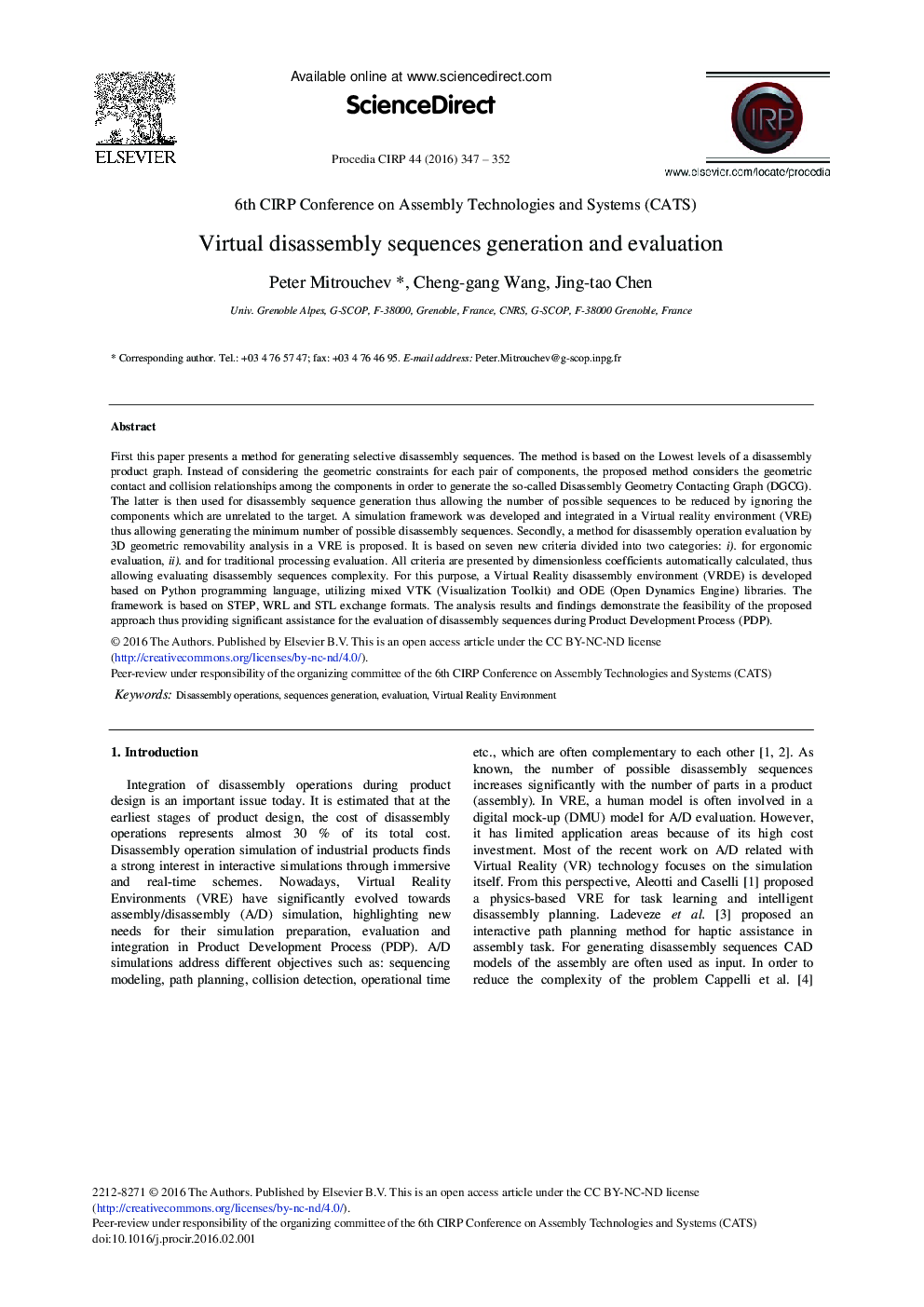| Article ID | Journal | Published Year | Pages | File Type |
|---|---|---|---|---|
| 1698619 | Procedia CIRP | 2016 | 6 Pages |
First this paper presents a method for generating selective disassembly sequences. The method is based on the Lowest levels of a disassembly product graph. Instead of considering the geometric constraints for each pair of components, the proposed method considers the geometric contact and collision relationships among the components in order to generate the so-called Disassembly Geometry Contacting Graph (DGCG). The latter is then used for disassembly sequence generation thus allowing the number of possible sequences to be reduced by ignoring the components which are unrelated to the target. A simulation framework was developed and integrated in a Virtual reality environment (VRE) thus allowing generating the minimum number of possible disassembly sequences. Secondly, a method for disassembly operation evaluation by 3D geometric removability analysis in a VRE is proposed. It is based on seven new criteria divided into two categories: i). for ergonomic evaluation, ii). and for traditional processing evaluation. All criteria are presented by dimensionless coefficients automatically calculated, thus allowing evaluating disassembly sequences complexity. For this purpose, a Virtual Reality disassembly environment (VRDE) is developed based on Python programming language, utilizing mixed VTK (Visualization Toolkit) and ODE (Open Dynamics Engine) libraries. The framework is based on STEP, WRL and STL exchange formats. The analysis results and findings demonstrate the feasibility of the proposed approach thus providing significant assistance for the evaluation of disassembly sequences during Product Development Process (PDP).
